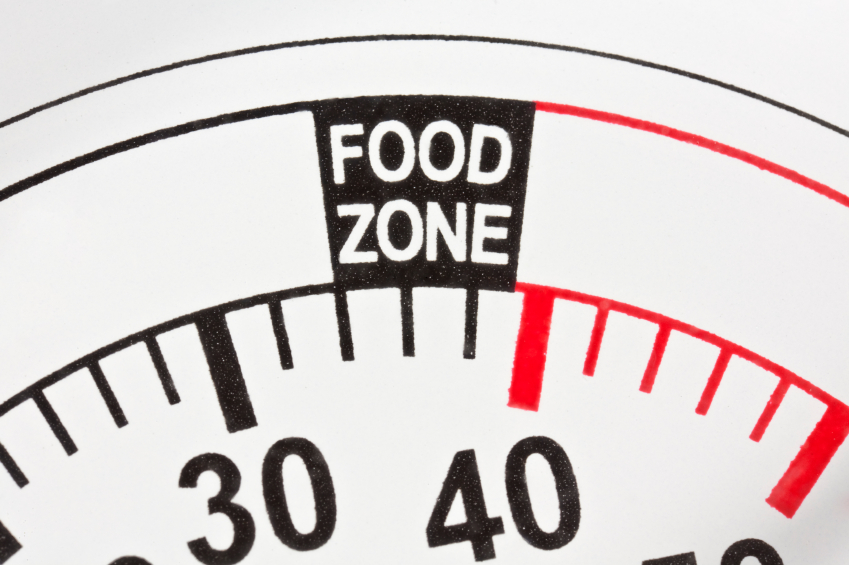
The first step to understanding how refrigeration thermostats (aka cold controls) work is to understand a counter-intuitive fact about refrigeration physics:
Cooling is achieved by sensing and removing warm air, not by adding cool air.
A thermometer, then, measures how much heat is present. If the heat level reaches a certain, um, level, the refrigeration mechanism kicks, and the refrigerant starts its trip through a maze of intestine-like coils, and the warm air is removed.
That’s the big picture, anyway. Let’s dive in and explore the process in greater detail.
A refrigerator thermostat/cold control is basically the brains of the refrigerator cooling system—it runs the show.
Thermostats are typically found inside the refrigerator and have a knob that allows users to adjust the temperature setting. Once a user sets the desired temperature, the thermostat maintains that temperature by controlling the flow of electricity to the compressor. If the thermostat is the brain, the compressor is the heart of the operation, responsible for pumping the refrigerant through the coils.
When the air inside the refrigerator is at the desired temperature, the thermostat stops the flow of electricity to the compressor. When the thermostat senses too much heat, it allows electricity to flow, activating the compressor.
How does the thermostat control the electricity, you ask?
In most commercial refrigerators, the thermostat has a capillary tube filled with gas. As the temperature in the fridge increases, the gas expands and pushes on a diaphragm, which operates a set of contacts which in turn operates the compressor.
Pretty cool, huh?
 Corner Booth Blog | TundraFMP Restaurant Supply, News & Equipment Blog
Corner Booth Blog | TundraFMP Restaurant Supply, News & Equipment Blog
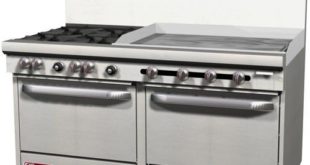
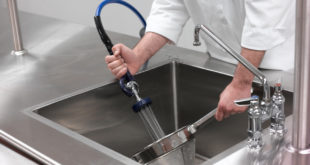
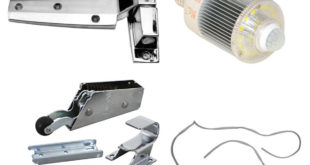
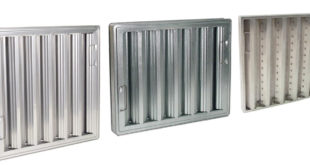
Thanks man !!!!!
You mean when we open our fridge , tempertaure inside the fridge goes up.. And again themostat senses heat and electricity start flowing?
Is it the reason we always hear more sound when we openup the fridge?
And can you plz tell what all gases are in that capillay tube have?
@Khushu the compressor won’t switch on when you open your door it takes a bit longer like having your freazer-fridge door open for at least 10min the thermostat works like an normal light switch per say it’s only bridged now how it works is like the author says the gas expands and the contactors switch off think an spring because thats basically what happens gas expands and the sealed spring expands too thus disconnecting and connecting contactors and sometimes another contactor switches on and thats the defrost element that’s basically just an very thin wire that gets hot and melts the ice
The thermostat has a capillary tube filled with gas. So what type of gas is inside? Will a severe bend in the tube affect operation? My refrigerator didn’t regulate properly for years, and later it was discovered that the capillary tube had a sharp bend. Could that explain it?
Hi Pete,
Yes, that would definitely affect operation. They put a type of refrigerant in there that reacts to the temperature and puts pressure on a switch in the body. If it’s pinched, then there would not be enough pressure to operate the switch correctly. Also, those thermostats are not designed to be adjusted a lot; they should be set to the middle setting (usually #5) and adjustments should be made only after the unit has had 4 hours to settle into the new setting. If additional adjustments are needed, only move it by one number at a time and give it time to settle again. Be happy with 36-38 degrees—trying to pull too low will lead to frozen coils and additional repair cost.
– Paul
Tundra Team
I was wondering if that is the case with my refrigerator. It had stopped cooling in both the freezer and the fridge. We cleaned the fridge out and turned it off for one day and night. The next day when we turned it on, it worked fine. However, the setting at that time was number 6 for the fridge. It was working great for one week and now it’s not cooling again. What could be the problem? There is a lot of frost in the back of the freezer. I’m assuming the coils are frozen again. If it’s the thermostat, can I replace it?
Hi Anna,
It does sound like a thermostat problem. If the unit doesn’t know to turn off, it will freeze up. It also sounds like you don’t have a commercial unit. I’d reach out to the manufacture direct and find out what they can provide you.
– Paul
Tundra Team
which type of gas use in thermostat inside.
Hi I have my frige 3 years now and both the fridge and freezer is not cooling the fridge part does not cool and the freezer does not freeze at all.However there is a sound that the motor is running.we had a guy refill the gas it worked for 1 day and it was back to not working.
Hi Shakira,
This sounds like a residential equipment question. At Tundra Restaurant Supply we only sell and provide guidance on commercial equipment. We suggest contacting the manufacturer of your refrigerator for more.
– Tundra Team
The issue i am facing is the compressor is working but the Freon doesn’t seem to be making a journey. put a pressure gauge and no movement on that needle. rock solid like a pressure test and not heated capillary lines. Evacuated freon and added suction pump etc to try to remove any clogs in line and added new freon. Only thing noticed is that there is a 3 way solenoid valve in line on the freon lines and one time in unplugging and plugging power to that valve with compressor working caused lines to get hot and Freon flowing and fridge temperature dropping. Also had higher amount of Freon in the system then (trying to push through any blockage). connecting power back to solenoid valve and trying again brought back to square 1 with no freon movement. What do you suspect if its high freon level or faulty solenoid or faulty connections /wires? what sequence of steps should i take in isolating to one or the other?
Jameel,
First off adding gas to clear a blockage is never a good idea. Even if you were able to clear something, it would go straight to the compressor and blow the pump. You can find blockage by taking temperatures of the lines. We know the metering device (TXV, Fixed orifice) drops the pressure for the low side. A blockage would do the same thing, so if you find a drastic temperature drop somewhere else in the system, then you’d find it. But, since you have a solenoid in there now, I’m assuming you are working on a walk in. So, you have to find what is controlling that solenoid and make sure that is doing its job and sending power to the solenoid. Most likely the thermostat. If you’re getting power at the solenoid and you don’t feel any temperature change after the solenoid then obviously the solenoid is bad. A lot of people jump the gun and start messing with gas when it could be as simple as electronic solenoid and all you had to do was pull off two wires and change it. Sorry I couldn’t walk you through the entire process, but without being there I had to speak in generalities. Good luck!
– Paul
Tundra Team
which type of gas filled in thermostat?
Hi Varun,
That’s most likely going to vary by manufacturer, but it’s going to be whatever refrigerate type the engineers decided would work best for the operation of the thermostat. Since refrigerates react to outside temperatures in a predictable manor they can use that predictability to ensure the unit operates the same every time.
Here’s an example of how they operate:
Gas-filled bellows
http://www.explainthatstuff.com/thermostats.html
– Paul
Tundra Team
Hi Paul, My refrigerator thermostat switches off at 15.1C, as the fridge gets warmer what temperature should it switch on at to pump down again, I have been a drop of -4C would be reasonable.
Is the thermostat adjustable to either widen this gap or reduce it.
Why would the fridge compressor seem to work harder as the temp pull down reaches 15.1C? ie it takes longer for the temp to decrease as the temp lowers, seems to me that the higher pull down temp required the longer it takes getting their.
Hi Peter,
I doubt you’d be able to adjust your thermostat very much. Those are set at the factory how they engineered the unit to work. You can put a aftermarket thermostat in it and have more control. The reason the unit works harder at the lower temperature is because the coil that the fan moves the warm air across only gets so cold. When there’s a large difference between the air temp and the coil it can capture more heat and move it out of the cabinet. The smaller the gap in temperature the harder the unit has to work to get those last few degrees.
– Paul
Tundra Team
HI Paul. I had to replace my thermostat on my fridge. I could not reposition the capillary tube as it was installed by the manufacturer. My fridge does not hane a guide or tube to send it through. It is just sort of weaved behind the cooling plate, at the back wall of the fridge. Now the fridge keeps on running. It does not swith on or off, to regulate the temperature. Must the capillary tube make contact all the way with the plat. Or is it not that important. Please help me if you can. As it is very difficult to get in behind that plate. thank you very much. Nic.
Nic,
I would suggest just calling the manufacture and choose the option on the phone for Technical Assistance and ask them what the preferred position is for your unit.
– Paul
Tundra Team
Hi Paul,
Can you tell us which are the gases that are used in the thermostat (please give us examples), i didn’t find a thing about that, I need names of gases 🙂 please !!
Thank you for your help !
The fridge/freezer is causing problems. The control knob inside the fridge is turned right down to 1. Everything in the fridge is icing up. I removed the inside panel and found that on the control knob is a gizmo which looks like a thermostat but there are no wires leading from it. How can this possibly work. I cannot find anything resembling a thermostat. I am reluctant to replace the gizmo attached to the control knob as I know this is not a thermostat. The pipe for draining water from the fridge compartment is clear, no obstruction there. If left the fridge will drop to one degree C. What can I do? I cannot afford a tradesman to come out and charge me 70to 80 quid for something simple which I could repair myself. Please help me.
my fridge does not automatically turns off i fixed a new thermostat but the problem still the same
At the thermostat area… Pleas mine is from no1 to no7 what is the best number to use for effective coldness?
Hi Paul I experiment with plants (Herbs) by chilling them to see if it changes their flavour, I would love my fridge to go as low as -1 but fridges don’t go that low, can I change my thermostat to adjust the temperature to do that.
Hi, Paul please tell me what is the meaning of Thermostat in LG fridge — GNF-110
It is using a coil to sense the temperature to turn off the motor. And how to test to see whether it works.
Many thanks